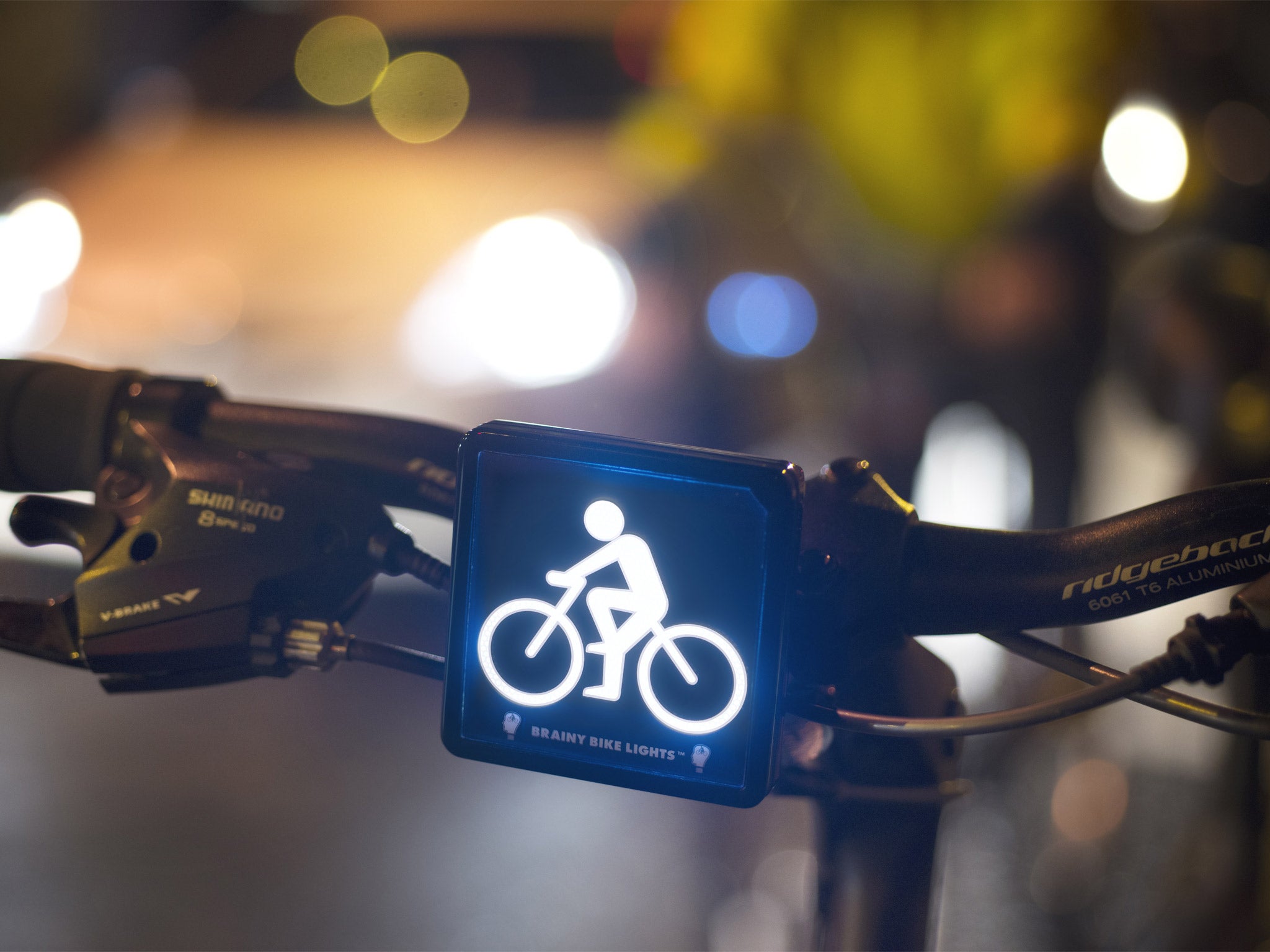Brainy Bike Lights invention represents a 'breakthrough in road safety' for cyclists
Behavioural psychologist Crawford Hollingworth's lightbulb moment helps drivers spot cyclists more easily

It is a phrase familiar to many cyclists who have come a cropper on our roads and retained the ability to hear the words: "Sorry mate, I just didn't see you." But how could you not see a big lump of human right in front of your eyes? The answer: a fault in our brains that means, sometimes, even when there is eye contact, the image of a cyclist does not materialise before it's too late.
Crawford Hollingworth, an expert in behavioural psychology, is more used to devising smart ways for companies to sell us stuff. But as a cyclist, who – touch wood – has escaped serious injury on his daily commute across London, he had a lightbulb moment that set him down a different path.
"I was about to cross Hyde Park Corner, one of the junctions in the city that scares me most, and noticed the little bike on the special set of traffic lights," he says. "I suddenly thought, there it is, a symbol that everybody knows that could have the power to unlock the brain."
Two years later, Hollingworth has launched a set of bike lights he believes represent a breakthrough in road safety. They are startlingly simple and, in all ways but one, like any other bike lights – white at the front, red at the rear. The difference: a black stencil turns the super-bright LED light each device emits into an image of a person on a bike.
"It means a driver does not have to decide what a light or shape belongs to, because their brain gets that information milliseconds faster, hopefully giving them time to adjust their behaviour," Hollingworth explains. For a fast-moving – or swerving – lorry, fractions of seconds can equate to several metres between it and a cyclist.
Brainy Bike Lights are designed to trigger the same associations during the day as well as the night, although they will be most effective in the dark. To develop them, Hollingworth drew on his own work, as well as that of academics, to reveal the importance of understanding our cognitive flaws and the power of familiar, human symbols to overcome them.

"There's a thing called priming," says Hollingworth, the co-founder of Behavioural Architects, a consultancy obsessed with the way consumers think. "For example, if you read literature embedded with words associated with ageing, such as 'tired' or 'achy', it subconsciously influences your behaviour – you might walk a bit slower. In the same way, a symbol of a bike with a human on it very quickly triggers associations with vulnerability."
Others have realised the same link. Brainy Bike Lights have a rival in Blaze, a light that throws a fluorescent laser image of a bicycle on to the road ahead. The AA, meanwhile, has issued free, transparent stickers featuring the cycle symbol for drivers to place on their wing mirrors. In a survey of more than 17,000 drivers as part of the motoring organisation's latest Think Bikes! campaign, 91 per cent admitted it was hard to see cyclists, while 55 per cent were "often surprised when a cyclist appears from nowhere".
"Our brains work on a subconscious level," Hollingworth adds. "We travel on autopilot, which is why we often have no memory of large parts of our journeys."
Inventors have applied similar psychology to other products. Children are more likely to brush their teeth properly when the toothbrush features a smiley face. Shoppers, meanwhile, have been shown to buy more cereal when a character on the box makes eye contact. "We've learned more about our brains in the past five years [than in] I don't know how long," Hollingworth says. "And any innovation has to be good if it also helps to save lives."
Join our commenting forum
Join thought-provoking conversations, follow other Independent readers and see their replies
Comments